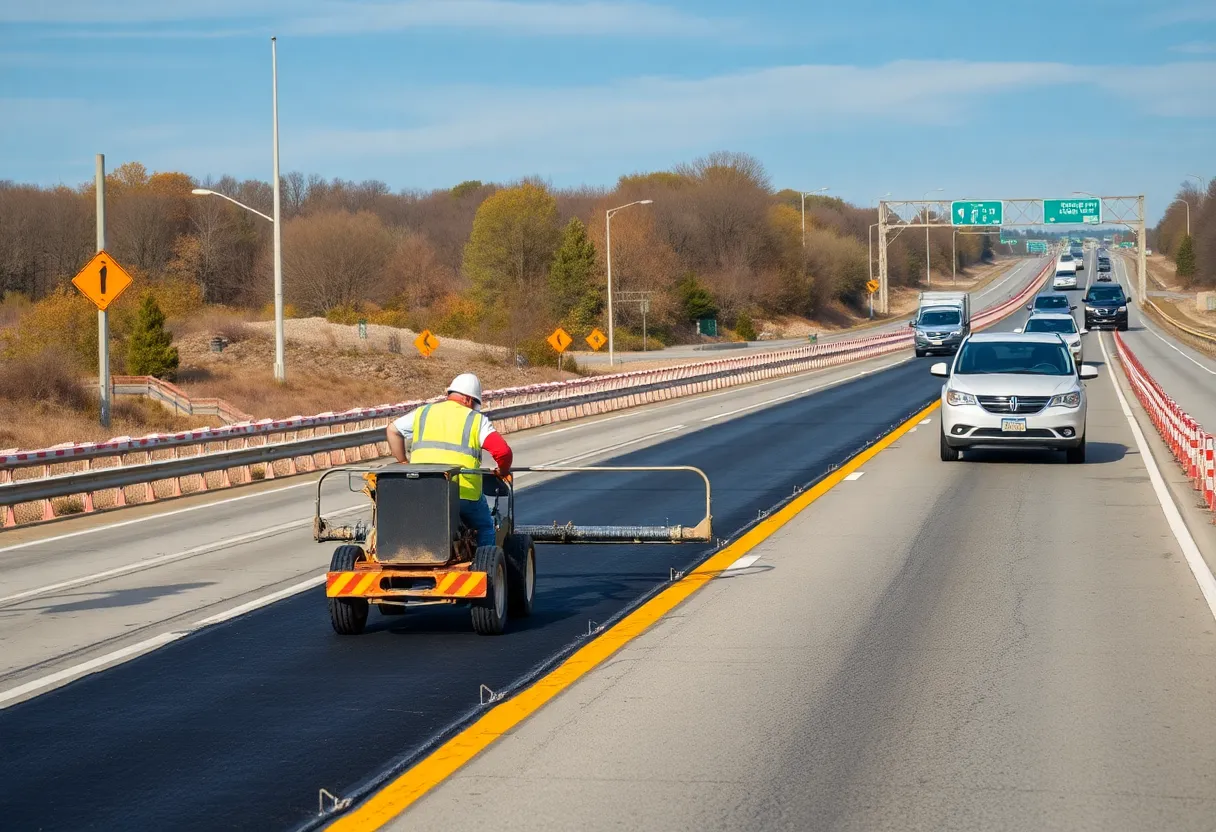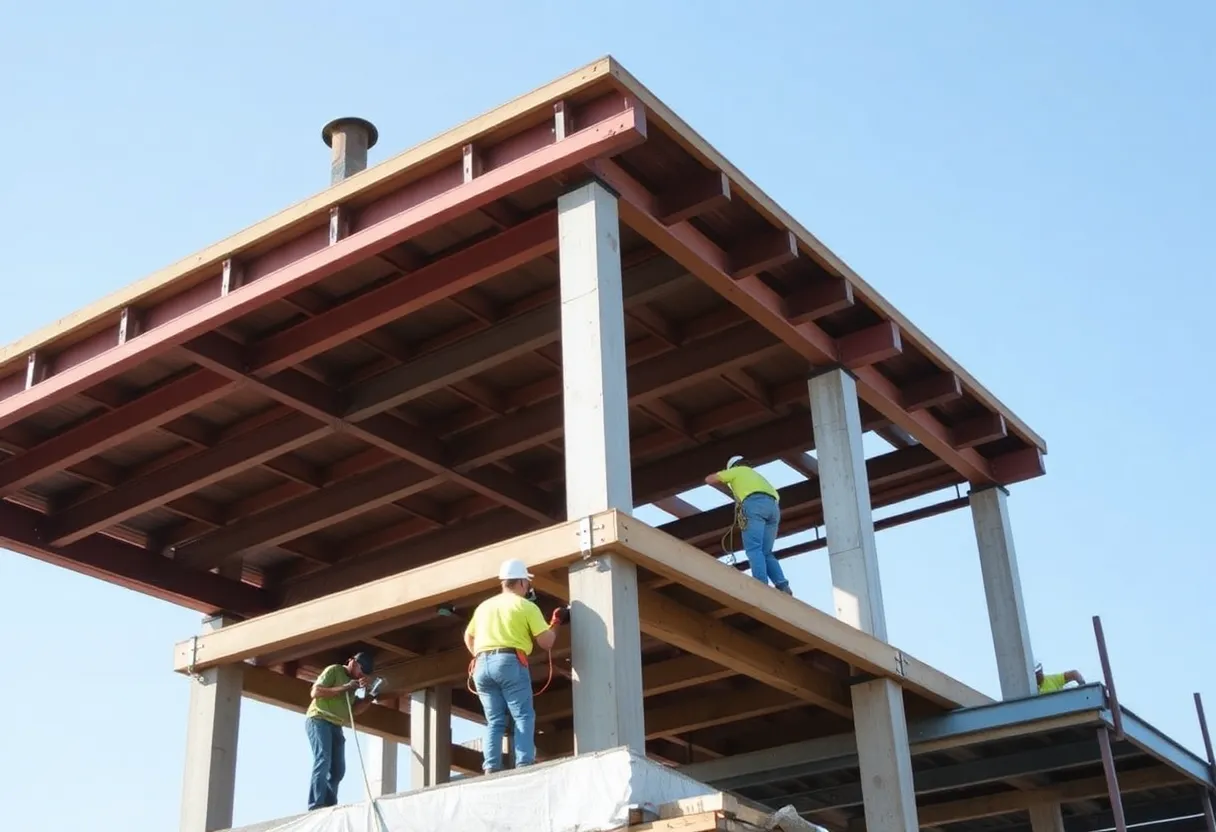News Summary
US construction firms are experiencing a significant slowdown in hiring efforts due to a tight labor market and rising costs. The latest reports indicate a 10% drop in new job postings across major sectors, with skilled trades like electricians and plumbers remaining difficult to fill. To address the skills gap, firms are focusing on upskilling existing employees while economic pressures, such as tariffs on materials, are causing project delays. Wage growth in certain regions, like South Dakota, offers some positive news in an otherwise challenging landscape.
Nationwide Construction Hiring Slowdown
Nationwide, US construction firms are reducing hiring efforts due to challenges in the labor market and increasing costs, with reports showing a 10% drop in new job postings across major sectors in the last 48 hours. This pullback reflects ongoing difficulties in filling skilled trades like electricians and plumbers, exacerbated by economic pressures such as tariffs on imported materials that are delaying project timelines.
Key factors contributing to this slowdown include a tight labor market, where skilled workers are scarce, leading firms to prioritize upskilling existing employees over expanding their workforce. Rising material costs, driven by tariffs, have added to the strain, causing delays in construction projects and forcing companies to adapt their strategies. Despite these challenges, wage growth remains a positive note in some areas, with salaries for construction jobs in South Dakota increasing by up to 8% annually.
Supporting details reveal that firms are turning to remote training programs to address skill gaps, helping workers gain necessary expertise without immediate hiring. Analysts point out that without changes to immigration policies, potential project stalls could become more common, as the industry struggles to balance growth with sustainability amid these economic headwinds.
Background and Context
The construction sector has faced persistent issues with workforce shortages, particularly in skilled trades, which have been hard to fill for years. Recent data indicates that the 10% drop in new job postings is a direct response to these pressures, as firms aim to control costs and maintain operations. Tariffs on imported materials have played a significant role in slowing down projects, increasing expenses and extending timelines across the US.
In South Dakota, the 8% annual wage growth for construction jobs highlights regional variations, where higher pay is attempting to attract and retain workers. This contrasts with the nationwide trend, where overall hiring is being curtailed. The adoption of remote training programs is a proactive measure to bridge these gaps, allowing for flexible skill development. Experts warn that without immigration reforms, the labor shortage could worsen, potentially leading to broader economic impacts on the industry.
Overall, the US construction industry is navigating a complex landscape of rising costs and labor constraints. By focusing on internal training and employee development, firms are seeking ways to sustain operations without aggressive expansion. This approach underscores the sector’s efforts to achieve long-term stability while adapting to current economic conditions.
The reliance on upskilling programs is gaining traction as a cost-effective solution. For instance, these programs help existing workers learn new skills quickly, reducing the need for external hires. Economic factors like tariffs not only raise material prices but also disrupt supply chains, further complicating project management. In regions like South Dakota, the wage increases demonstrate how local markets are responding to national trends, offering incentives to keep the workforce engaged.
Analysts emphasize that the industry’s growth is at risk if labor issues persist, potentially affecting infrastructure and housing developments across the country. This nationwide scenario highlights the need for strategic adjustments to ensure projects move forward efficiently. As firms adapt, the balance between cost management and workforce development will be crucial for future success.
Additional context shows that while hiring has slowed, the focus on sustainability includes exploring innovative training methods. Remote programs, in particular, provide access to education for workers in remote areas, helping to mitigate the skills shortage. Despite the challenges, these adaptations could lead to a more resilient industry in the long run.
The construction sector’s current state reflects broader economic dynamics, with firms prioritizing efficiency over rapid growth. This shift is evident in the reduced job postings and the emphasis on existing talent. Moving forward, addressing immigration and trade policies could alleviate some pressures, allowing for smoother operations nationwide.
In summary, the 10% drop in new job postings nationwide underscores a critical moment for US construction firms. By leveraging upskilling and remote training, the industry is working to overcome labor market tightness and rising costs, all while monitoring regional wage trends like those in South Dakota.
FAQ Section
Frequently Asked Questions
- Question: What is causing US construction firms to pull back on hiring? Answer: US construction firms are pulling back on hiring, facing headwinds from a tight labor market and rising costs.
- Question: How much has the number of new job postings dropped? Answer: Reports indicate a 10% drop in new job postings across major sectors.
- Question: Which skilled trades are hard to fill? Answer: Skilled trades like electricians and plumbers remain hard to fill.
- Question: What economic factors are affecting project timelines? Answer: Economic factors such as tariffs on imported materials exacerbate delays in project timelines.
- Question: What are firms focusing on instead of expansion? Answer: Firms are focusing on upskilling existing employees rather than expansion.
- Question: What is happening with wages in some regions? Answer: Despite this, wage growth in some regions, like South Dakota, shows salaries for construction jobs increasing by up to 8% annually.
- Question: What training methods are becoming popular? Answer: Remote training programs are becoming popular to bridge skill gaps.
- Question: What do analysts warn about? Answer: Analysts warn of potential project stalls without immigration reforms.
- Question: How is the industry described overall? Answer: Overall, the industry grapples with balancing growth and sustainability.
Key Features Chart
| Feature | Description |
|---|---|
| Hiring Pullback | US construction firms are pulling back on hiring due to a tight labor market and rising costs. |
| Job Postings Drop | 10% drop in new job postings across major sectors. |
| Skilled Trades | Skilled trades like electricians and plumbers remain hard to fill. |
| Economic Factors | Deeper Dive: News & Info About This Topic





